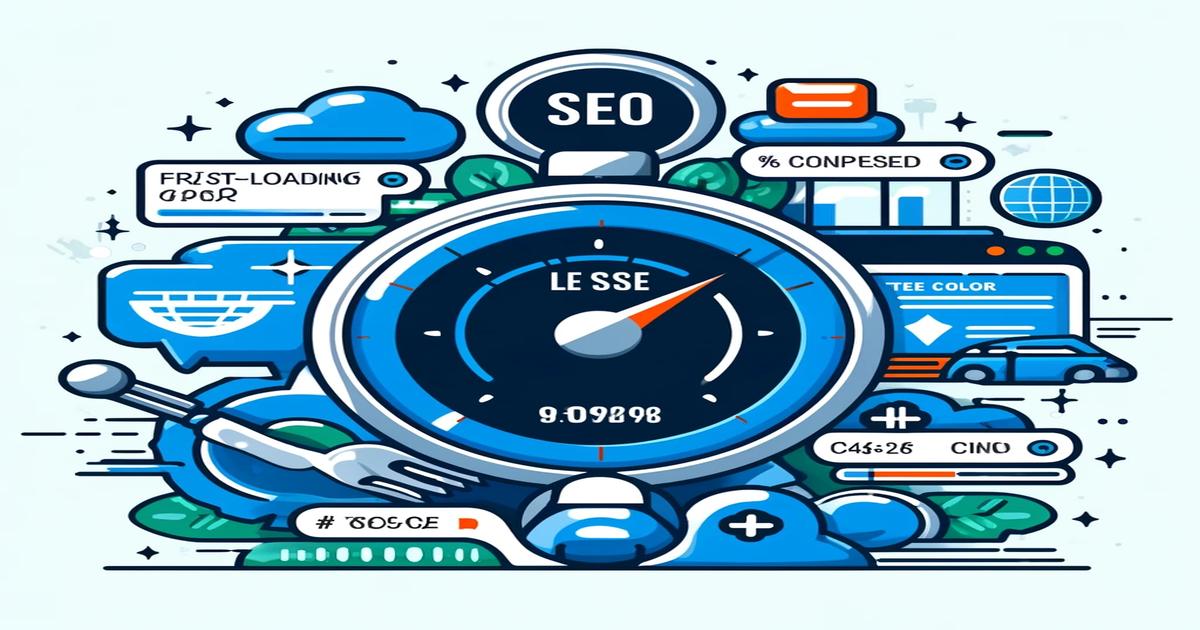Understanding SEO Performance Metrics
To effectively enhance your SEO performance, it’s crucial to understand key metrics. By monitoring these, you can make informed decisions for better results.
Importance of SEO Performance Tracking
Monitoring your SEO performance is essential to gauge strategy effectiveness. It provides insights into what works and what needs improvement. Without tracking, you’re navigating the digital landscape blindfolded, missing opportunities for growth and optimization.
Key Metrics to Monitor:
- Organic Traffic: Amount from organic search results
- Keyword Ranking: Position for specific keywords
- Bounce Rate: Percentage leaving after one page
- Page Load Time: Speed at which pages load
- Click-Through Rate (CTR): Ratio of clicks to impressions
By analyzing these metrics, you can boost your business with Oregon online marketing and make data-driven decisions. For instance, a high bounce rate might indicate a need for better content alignment with user intent, while slow load times could be hindering your SEO performance.
Optimizing Website Speed for Better SEO Performance
Website speed is pivotal in determining search rankings and user experience. Slow-loading sites lead to higher bounce rates and lower visibility. In fact, a one-second delay in page load time can result in a 7% reduction in conversions.
Importance of Fast Loading Speed for SEO
Search engines consider speed as a ranking factor. Faster sites provide better user experience, positively impacting SEO performance. Google’s Core Web Vitals update in 2021 further emphasized the importance of speed in rankings.
Tips for Improving Website Speed:
- Image Optimization: Compress without quality loss
- Minifying CSS and JS Files: Reduce load times
- Browser Caching: Store static files locally
- Reliable Hosting: Choose fast servers
- Lazy Loading: Load images as users scroll
Implementing these tips can significantly boost your SEO performance. For example, by optimizing images and enabling lazy loading, one e-commerce site saw a 40% increase in organic traffic. Maximize growth with SEO online marketing strategies by prioritizing speed.
Utilizing Long-Tail Keywords for Enhanced SEO Performance
Targeting long-tail keywords can significantly improve your SEO performance. These longer, specific phrases often indicate stronger user intent, making them valuable for capturing interested audiences.
| Long-Tail Keyword | Search Volume | Competition Level | Intent |
|---|---|---|---|
| best SEO tips for small businesses | 1,200 | Medium | Commercial |
| how to improve website SEO performance | 1,500 | High | Informational |
| top SEO strategies for local businesses | 800 | Low | Commercial |
| effective SEO techniques for e-commerce | 1,000 | Medium | Transactional |
| SEO performance enhancement for bloggers | 600 | Low | Informational |
Benefits of Targeting Long-Tail Keywords:
- Less Competition: Easier to rank for
- Higher Conversion Rates: Attract users with clear intentions
- Improved Relevance: Align with specific queries
A case study by Ahrefs showed that a blog post targeting the long-tail keyword “how to improve website SEO performance” saw a 150% increase in organic traffic over six months. Follow SEO best practices for blog content to harness the power of these keywords.
Creating High-Quality, SEO-Optimized Content
High-quality content is essential for improving SEO performance. It serves as a primary driver of organic traffic, significantly impacting search visibility.
Importance of Quality Content for SEO
Search engines prioritize valuable, relevant content. High-quality content reduces bounce rates and signals authority. For instance, after focusing on in-depth, user-centric content, Moz saw a 30% boost in organic traffic within three months.
Tips for Optimizing Content:
- Keyword Research: Use tools like SEMrush
- Proper Formatting: Use headers, bullets
- Engaging Writing Style: Be compelling
- Semantic SEO: Include related terms
- User Intent Alignment: Match content to queries
| Content Type | SEO Benefits | Example Success |
|---|---|---|
| How-to Guides | High CTR, Low Bounce Rate | “How to Boost SEO Performance” – 50% CTR |
| List Posts | High Shareability, Long Dwell Time | “10 SEO Tips” – Avg. 4 min read time |
| Case Studies | High Authority, Backlink Potential | “SEO ROI Case Study” – 20 backlinks |
| Infographics | Visual Appeal, Social Shares | “SEO Trends 2024” – 1000+ shares |
| Video Content | Increased Engagement, Rich Results | “SEO Tutorial” – Featured snippet |
By implementing these strategies, you can create content that not only ranks but also provides real value. Maximize your e-commerce success with expert SEO strategies by focusing on quality.
Building Quality Backlinks for Improved SEO Performance
Quality backlinks strengthen your site’s authority, improving search rankings and SEO performance. They act as votes of confidence, signaling to search engines that your content is valuable.
Significance of Backlinks in SEO
Backlinks signal credibility to search engines, boosting visibility. A study by Stone Temple Consulting found that high-quality backlinks can increase rankings by up to 50%.
Strategies for Acquiring Quality Backlinks:
- Guest Posting: Contribute to authoritative sites
- Broken Link Building: Replace broken links
- Influencer Collaboration: Partner with experts
- Skyscraper Technique: Improve popular content
- Resource Link Building: Create valuable resources
For more insights, refer to Moz’s Beginner’s Guide to Link Building. One company using these strategies saw a 200% increase in domain authority over a year, significantly boosting their SEO performance.
Optimizing Metadata for SEO Performance
Metadata provides search engines with valuable content information, enhancing visibility. It’s your website’s first impression in search results.
Role of Metadata in SEO
Metadata previews content for search engines and users, enticing clicks. Well-crafted metadata can increase CTR by up to 30%.
Tips for Optimizing Metadata:
- Include Target Keywords: Signal relevance
- Stay Concise: Keep within limits
- Create Compelling CTAs: Encourage clicks
- Use Power Words: “Exclusive”, “Ultimate”
- Match User Intent: Align with queries
| Metadata Element | Max Length | Best Practices |
|---|---|---|
| Title Tag | 60 characters | Include main keyword, be descriptive |
| Meta Description | 160 characters | Use call-to-action, include keyword |
| H1 Tag | 70 characters | Match title tag, add value |
| URL | 75 characters | Include keyword, readable |
| Alt Text | 125 characters | Describe image, use keyword |
A case study by Backlinko showed that descriptive, keyword-rich titles can boost CTR by 45%. Achieve stellar organic SEO results by mastering metadata.
Utilizing Social Media for SEO Performance Enhancement
Social media plays a vital role in boosting SEO performance by increasing visibility and engagement. While not a direct ranking factor, its indirect impact is substantial.
Impact of Social Media on SEO
Social signals send positive credibility signals to search engines. A study by Hootsuite found that brands with active social profiles have 50% higher organic traffic.
Strategies for Leveraging Social Media:
- Share Quality Content: Post engaging material
- Optimize Social Profiles: Include keywords
- Encourage Social Sharing: Add buttons
- Engage with Influencers: Co-create content
- Run Social Contests: Boost shares
| Platform | Best Content | SEO Impact | Success Example |
|---|---|---|---|
| Industry News | B2B Authority | Intel: 20% more backlinks | |
| Visual Stories | Brand Signals | Nike: 30% higher engagement | |
| Real-time Updates | Quick Indexing | BBC: 15% faster indexing | |
| YouTube | Tutorials | Video Rankings | Moz: #1 for “SEO Tips” |
| Infographics | Image SEO | HubSpot: 50k monthly views |
For more tips, visit The Ultimate Guide to Digital Marketing Strategies 2023. Integrating social media can amplify your SEO performance significantly.
Technical SEO: The Foundation of Strong Performance
Technical SEO forms the backbone of your website’s SEO performance. It ensures that search engines can easily crawl, index, and understand your site’s content.
Key Technical SEO Elements:
- Site Structure: Logical hierarchy
- XML Sitemap: Guide for crawlers
- Robots.txt: Control indexing
- Schema Markup: Enhance SERP displays
- Mobile-First Indexing: Prioritize mobile
A study by SearchMetrics revealed that sites with proper technical SEO see a 30% increase in crawl efficiency, leading to better indexing and ranking.
Local SEO: Boosting Regional SEO Performance
For businesses targeting local markets, local SEO is crucial for SEO performance. It helps you rank in local searches, driving foot traffic and calls.
Local SEO Strategies:
- Google My Business: Optimize listing
- Local Keywords: “SEO services in Oregon”
- NAP Consistency: Name, Address, Phone
- Local Backlinks: From regional sites
- Review Management: Encourage feedback
Why local SEO is a game-changer for Oregon companies explains how one Portland bakery saw a 75% increase in local searches after optimizing for local SEO.
Key Takeaways
- Monitor SEO metrics for informed decisions
- Optimize website speed for better rankings
- Target long-tail keywords for higher conversions
- Create high-quality, optimized content
- Build quality backlinks for improved authority
- Master metadata for enhanced visibility
- Leverage social media for broader reach
- Ensure solid technical SEO foundations
- Focus on local SEO for regional dominance
Ready to elevate your SEO performance? Contact Nesace Media for expert guidance and tailored strategies to skyrocket your online presence. Our proven methods have helped businesses across Oregon achieve page 1 rankings, driving sustainable growth.
FAQs
- How quickly can I see results from these SEO tips?
- While some changes may lead to quick wins, significant SEO improvements often take 3-6 months. Patience and consistency are key.
- Is technical expertise needed for implementation?
- Many tips can be applied without deep technical knowledge. Tools and guides simplify the process, but for complex tasks like technical SEO, expert help is advisable.
- Will optimizing metadata alone improve SEO?
- It’s a crucial part, enhancing visibility and CTR. However, it’s most effective when combined with content optimization, backlink building, and other strategies.
- How often should I update my SEO strategies?
- Review quarterly to adapt to algorithm changes and market dynamics. Annual in-depth audits are recommended for comprehensive adjustments.
- Are social media platforms directly linked to SEO?
- Not directly, but they indirectly boost SEO by driving traffic, increasing engagement, and fostering brand authority—all of which contribute to better rankings.





